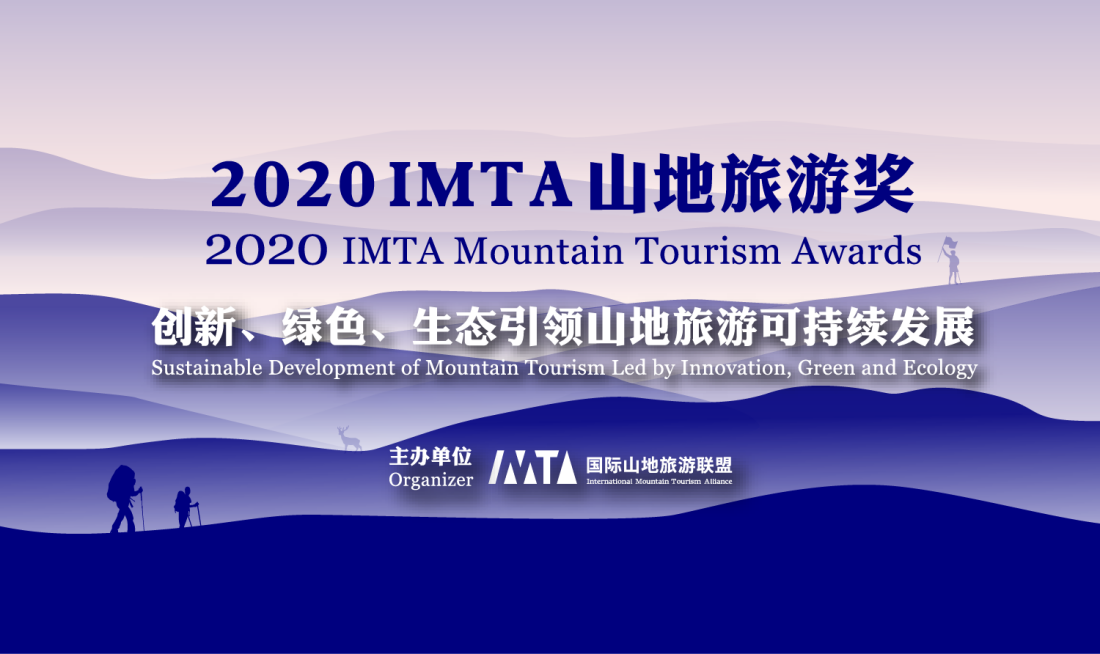Editor’s Note
On 29 May, the 2022 International Mountain Tourism Day theme event was held online and themed on “Mountain Tourism Promotes Healthy Life and Cultural Exchange”. The event motivated the New Media network, connected IMTA members, destination agencies, enterprises, and experts from all over the world, and carried out “cloud communication, dialogue, and presentation” around three chapters — “Focus · Mountain”, “Health · Life”, and “Civilization · Communication”. Against the complex global landscape and threat from COVID-19, the event helps create a healthier and more positive atmosphere and market for mountain tourism, promote cultural exchange, friendly communication, and mutual integration among countries, to jointly prepare, build, and share a bright future of mountain tourism. At the event, Chen Ping, Member of IMTA Expert Committee, Dean of Academy of Cultural Heritage and Creativity of Jinan University, Global Vice President of the Internationale Organisation Für Volkskunst (IOV), delivered a speech.
Revitalizing Mountain Folk Culture——Inheriting and Innovating Traditional Handicraft
I’m really glad to see you all online. Thanks to IMTA for carrying out the International Mountain Tourism Day and other events regularly and put us all together via videoconferencing to discuss and share our ideas and experience. I’m honored to be invited.
Today, I’d like to talk about revitalizing mountain folk culture and inheriting and innovating traditional handicraft. It is also what I have been working on and studying for years.
The human civilization comes from creating by mind and working by hand. So, traditional handicraft witnesses civilizations in different eras, customs of many places, as well as various folk cultures, lifestyles, and religions and beliefs. Traditional handicraft is valuable treasure left by our ancestors.
It is also the results of human intellect. For hundreds of years humans have been thriving on this planet passing knowledge from generation to generation. The history of the existing handicraft skills is the witness of human evolution, and in many handicraft skills we can see the valuable craftsmanship spirit and culture. Such culture still stands out brilliantly in modern tourism. So, the distinct and colorful traditional handicraft constitutes the diversity of mountain tourism and the pillar of local tourism income.
As the modern economy rockets, people’s lifestyles and consumption habits are changing. Craft skills are replaced by industrialized, low-cost, and massive production many handicraft industries have been mechanized and many traditional ones fade away. So, many traditional handicrafts skills with ancient wisdom have been lost due to the deteriorated environment. And, as the social market economy rises, people’s life speeds up their demand for a material life climbs up. And in the face of high-efficiency industrialization, traditional handicraft goes without anyone caring. It is a huge loss of the treasure of human civilization.
According to China’s first national census of craft industry in 2008, of the 1,881 craft works surveyed 988 (52.53 percent) were in good development, 535 struggled to survive, 244 were endangered and 114 were discontinued. The craft industry today is even more worrying.
In mid-20th century, China had over 10,000 time-honored shops, specialized in food, catering, clothes, fabric, traditional Chinese medicine, textile, arts and crafts, and relics and antiques. But the number plummeted to less than 2,000 after the 1990s nearly dropped to one fifth. Worse still, more than half of the existing ones are struggling and many others are in a long-run loss on the brink of bankruptcy. Only 10 percent time-honored shops are growing well. Another survey shows that China’s famous brands are dwindling by 5 percent every year including various time-honored brands.
The same thing happens worldwide. Especially in the past three years, tourism is hit hard by COVID-19, causing many handicraft workers to lose jobs making it hard for them to survive. So, when we are talking about recovering and revitalizing mountain tourism today, we should also care about the suffering craft industry and handicraft workers.
The global traffic network and tourism economy are yet to be restored. So I suggest IMTA pay close attention to the important value of traditional handicraft and establish “Mountain Handicraft Protection and Innovation Committee” to give mountain handicraftsmen easier access to business information in the post-COVID world. In addition, IMTA can work with e-commerce platforms to build handicraft database and marketing network, to form a competitive supply chain. Let me break it down here:
First, build an online communication platform to share management experience and policies. Based on its edges and influence, IMTA can call on government departments to implement policies on protecting mountain handicraft, and mountain tourism after the pandemic, build up effective marketing channels with branding strategies for handicraftsmen via tourist map and big data platforms.
Second, carry out internet training programs and courses. IMTA can organize professional personnel to carry out online and offline training for handicraftsmen in underdeveloped areas to improve their overall quality, and culture their creativity and design capability, and their ability to keep up with the modern consumer market.
Third, invite professional designers to take part in the research development and design of traditional handicraft. IMTA can help turn traditional handicrafts into more life-oriented, practical, fashionable, and exquisite modern goods, to expand the consumer base improve the market and economic benefits of handicrafts, so as to help handicraftsmen get higher incomes and live a better life.
Fourth, hold online and offline handicraft exposition. IMTA can build platforms for communication, display, and marketing to help handicraftsmen from different countries and regions to exchange and share experience. It can also pool talents, including government officials, university faculty, designers, and internet salesmen to achieve cooperation among different disciplines, fields, and cultures, and offer both academic and technical support for the protection and development of traditional handicraft.
Fifth, advertise and promote via new media. Via new media platforms like YouTube, Tik Tok and Twitter. IMTA can introduce traditional handicraft to the world attract young people to watch livestreaming to help advertise for the craft industry and make it more popular.
Last, hold regular industry seminars and academic sharing sessions. IMTA can invite designers and handicraftsmen to interact with each other and figure out how to combine traditional skills and modern design concepts.
Traditional handicraft is not always incompatible with industrial production. They are actually complementary to each other manifested in economic development and culture. It means that traditional culture can add more value and influence to modern products. For example, since 2008, the Palace Museum Cultural Products and Services team has been promoting the culture and IP of the Palace Museum launched multiple cultural products, and making the Palace Museum an extremely popular tourist attraction across the internet via H5 ads, and programs like Master in Forbidden City, National Treasure, and Treasure in the Forbidden City. In 2017, the Palace Museum Cultural Products and Services have reaped 1.5 billion yuan of revenue which not only helped spread traditional Chinese culture across the globe, but also raised funds for managing and protecting relics in the Palace Museum.
Cultural exchange can promote understanding and cooperation among different nations. It is also the internal prerequisite for achieving cultural globalization and diversity. A friendly cooperation partnership can benefit so many aspects of people’s lives, such as food, clothing, housing and transportation. For example, the Silk Road in ancient China served as a cultural passage to bring mutual benefits to nations. It has not only helped nations along the road reap lucrative economic profits, but also facilitated the exchange and integration of excellent traditional culture. As a result, cultural exchange plays an important part in international communication and cooperation. Only through the exchange can we effectively learn from each other. Today, we discussed the communication and innovative development of international mountain tourism particularly that of traditional handicraft arts. Protection and inheritance of their value is the only way to achieve creative development and to pass them on to future generations to build a much healthier and stronger cultural industry, and to maintain a sustainable international mountain society and economy. These are my personal thoughts to share with you.














